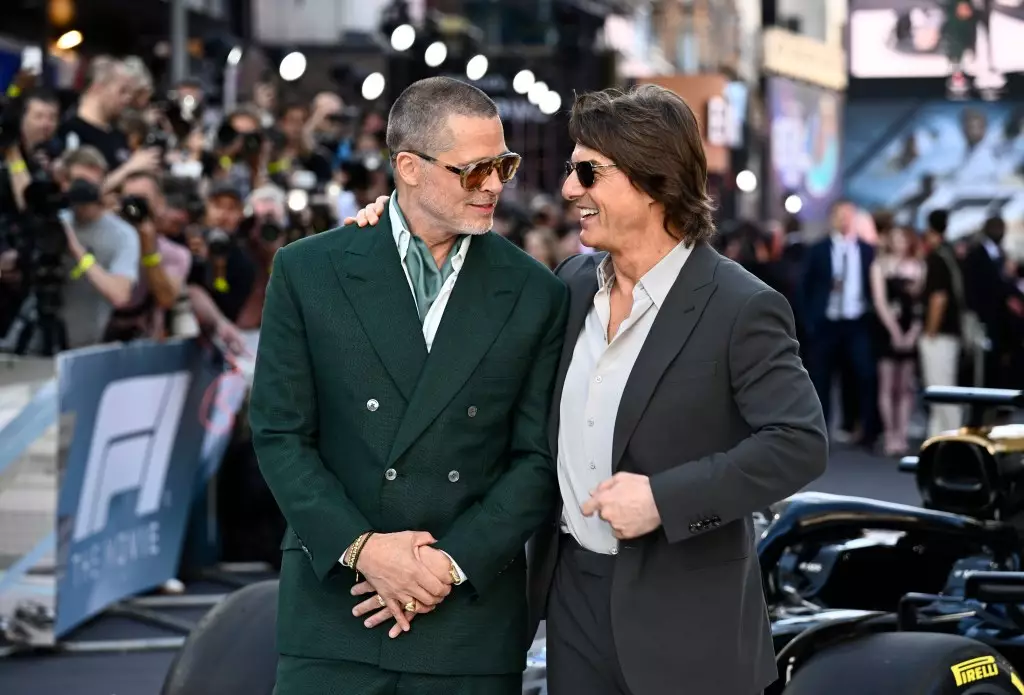Many Hollywood narratives are built on dreams—aspirations of blockbuster hits, iconic collaborations, and resurrected franchises that promise to redefine cinematic history. Yet, a deeper examination reveals a pattern: the majority of these projects are fleeting illusions, built on fragile foundations of ambition and idealism. The story of Brad Pitt and Tom Cruise’s involvement in “Ford v Ferrari” exemplifies this disconnect between Hollywood’s aspirations and the harsh realities of filmmaking. Both actors, perennial icons in their craft, initially envisioned themselves bringing this racing story to life, yet ultimately, their dreams remained prisoners of circumstance. This highlights a persistent issue in the film industry—enthusiastic talent and high-profile ideas often falter under logistical, financial, or creative constraints. The glamorous veneer obscures the fact that many projects never evolve beyond fleeting conversations or unfulfilled promises, forcing even the most acclaimed actors to accept disappointment instead of cinematic legacy.
Heroic Ambitions: The Myth of Control in Hollywood Productions
The reasons behind the abandonment of “Ford v Ferrari” as initially envisioned by Pitt and Cruise are emblematic of a broader illusion—that creators and stars have control over their projects. Pitt’s recounting of how studio objections and budget concerns derailed the original directorial vision underscores a core truth: Hollywood’s power dynamics often overshadow artistic intent. When a major studio budgets a film, commercial considerations frequently eclipse creative desires. The narrative of Pitt and Cruise’s dream project being thwarted by seemingly minor budget issues encapsulates this reality—visionaries are often powerless in the face of financial priorities. Their desire to participate and shape the story becomes secondary to securing the necessary funds, which ultimately steers the project toward a compromise or cancellation. This misalignment between artistic aspiration and economic pragmatism is a cautionary tale about the sanitized, risk-averse reality of mainstream Hollywood, which prefers tried-and-true formulas over genuine creative risks.
Sequel Fantasies and the False Promise of Continuity
Years later, the lingering hope of a “Ford v Ferrari” sequel or a related racing saga reveals Hollywood’s obsession with franchises and sequels as a perceived safety net. Pitt’s expressed desire to revisit the racing world, coupled with Kosinski’s hints at audience-driven decision-making, exposes a fragile truth: sequels are often less about storytelling and more about capitalizing on established brand recognition. These dreams are fueled by a Hollywood culture obsessed with guaranteed returns rather than authentic innovation. The reality is that many sequels, despite their hype, rarely surpass their predecessors in quality or impact, especially when driven by commercial motives rather than creative passion. Furthermore, the notion of actors wishing to return to roles only highlights Hollywood’s tendency to commodify talent—exploiting nostalgia while often neglecting meaningful character arcs or narrative depth.
The Illusion of Passion: Hollywood’s Love Affair with Spectacle
In interviews, Pitt’s romanticization of racing—his talk of returning to speed records or focusing on F1—shines a light on Hollywood’s fickle relationship with passion. The industry loves stories of grit, speed, and adrenaline, yet rarely invests in the raw, unpredictable essence of these pursuits. The desire for authentic racing action becomes secondary to spectacle and marketability, often stripping the stories of their genuine human struggles. While Pitt’s enthusiasm is commendable, it also reveals a disconnect: Hollywood’s fixation on glamorous racing scenes and star escapades can sometimes overshadow the real stories of dedication, sacrifice, and technical mastery that define motorsports. The glamorization often reduces complex, compelling narratives into superficial displays, ultimately betraying the sport’s authenticity and cultural significance.
Hollywood’s dreams are often painted in bold strokes—epic projects, star collaborations, and sequels that promise endless entertainment. Yet, the underbelly of this industry is a landscape riddled with unfulfilled ambitions and compromises. The stories of Pitt and Cruise’s “Ford v Ferrari” ambitions serve as a sobering reminder: behind every sparkling premiere lies a tangled web of logistical hurdles, financial fears, and creative concessions. While Hollywood continues to chase the allure of nostalgia and spectacle, genuine storytelling often suffers, sacrificed at the altar of risk aversion and commercialism. There’s a critical need to recognize that behind the glamour is a system that values safe bets over authentic passions—an uncomfortable truth that aspiring artists and audiences alike must confront if they hope for a future where art truly reflects the stories worth telling.

Leave a Reply